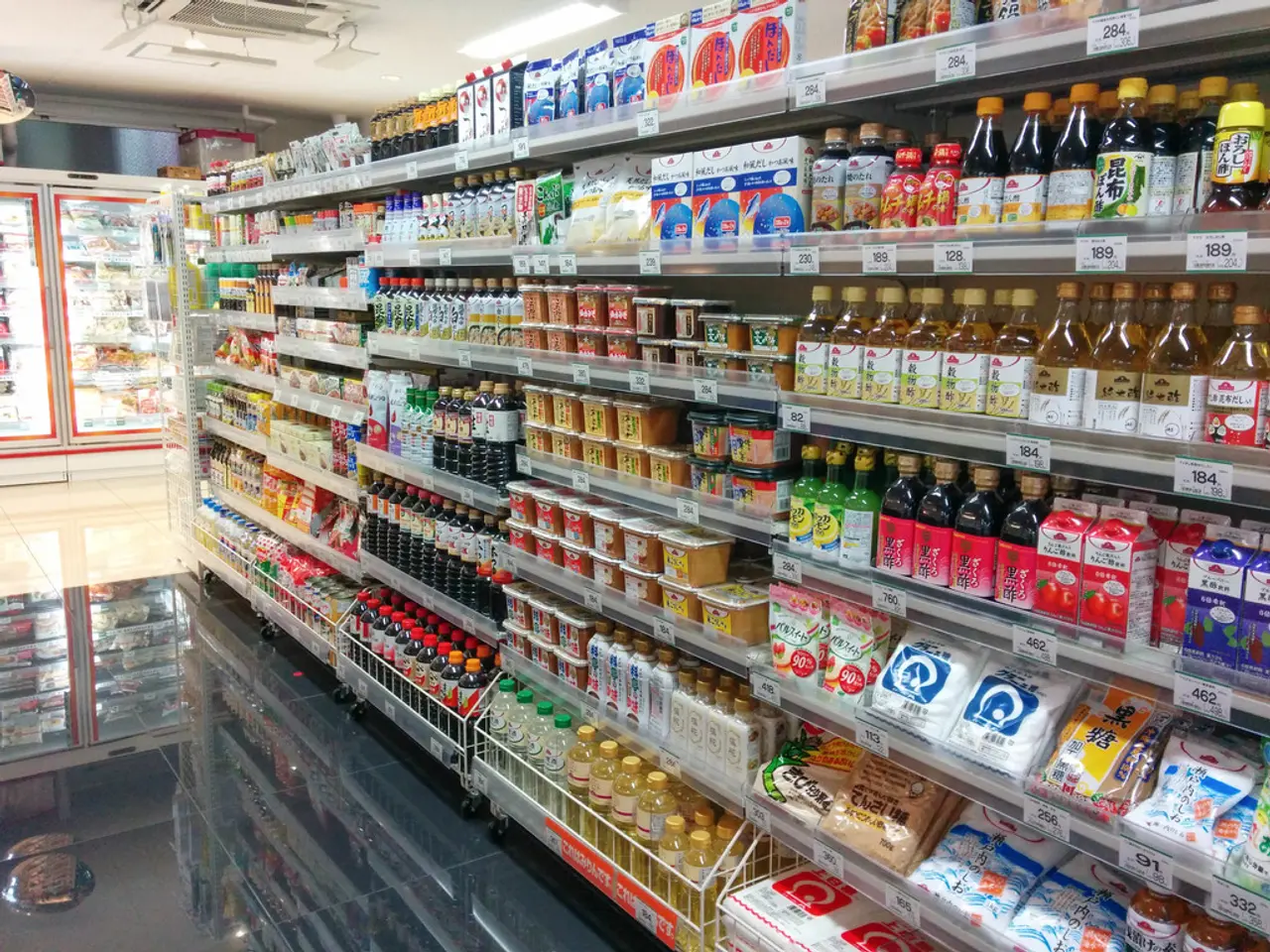Economic Impacts of Tariffs on Middle-Class Consumption in 2025: Top Affected Purchases for the Average American
In the year 2025, a series of tariffs on U.S. imports have been causing significant financial strain for middle-class households. According to various studies, the average annual increase in expenses for a household can range from approximately $1,300 to nearly $5,000, depending on the scope considered [1][2].
These tariffs affect a broad range of goods, including cars, electronics, clothing, fresh produce, gasoline, furniture, household appliances, construction materials, toys, and sporting goods, coffee, and chocolate. As a result, consumers are experiencing notable price increases and reduced consumer choice.
Let's delve into how these tariffs are impacting specific categories:
- Cars and Construction Materials: A 25% tariff on steel and aluminum has inflated costs for vehicles and construction supplies, increasing prices for new cars and home improvements [2]. This ripple effect raises both direct purchase costs and related service expenses.
- Electronics: Tariffs on imported electronics raise prices by increasing costs on imported components, making items like phones and household tech more expensive [2].
- Clothing: Clothing prices rise as tariffs on textile imports increase production costs, leading to higher retail prices for middle-class consumers [1].
- Fresh Produce, Coffee, and Chocolate: Tariffs on imported food ingredients contribute to grocery bills increasing by up to 10%, as seen with fresh produce. Coffee and chocolate prices also rise due to tariffs on imports and supply chain cost increases [1].
- Gasoline: While not purely import tariffs, tariff-related inflation combined with supply chain complexities indirectly contributes to higher gasoline prices through elevated refining and distribution costs [1][2].
- Furniture and Household Appliances: Imported furniture and appliances face higher tariffs, reflecting in retail prices that stretch household budgets, reducing purchasing power [1][2].
- Toys and Sporting Goods: Tariffs raise costs for these discretionary items, leading many families to cut back spending or switch to cheaper alternatives [1][4].
The cumulative effect of these tariff-driven price hikes is a sizeable financial burden that reduces discretionary income and alters consumer purchasing patterns [1]. Consumers respond by changing shopping behaviors, such as buying at discount warehouses, shifting to domestic products when possible, or choosing cheaper brands [1][4].
Financial experts recommend strategies like strategic borrowing, prioritizing savings, and smart shopping to mitigate the impact. However, small businesses may struggle more given limited capacity to absorb tariff-related cost increases compared to larger firms, which could further affect product variety and pricing [1][3][4].
Some specific examples of price increases include:
- Coffee and chocolate prices are expected to rise by 5%-10% due to a 10% universal tariff on Brazil and Colombia, and 21% on Cote d'Ivoire for cocoa [10].
- Toys and sports goods, including Lego sets and soccer balls, will become 10% to 15% more expensive due to a 34% tariff on China and a 10% universal tariff [9].
- The price of household appliances like washers and refrigerators is expected to increase by $100 to $200 per appliance due to a 34% tariff on China, 25% on Mexico, and a 10% universal tariff [7].
- Construction materials such as lumber and drywall will see costs increase with projects potentially costing over $1,200 each due to a 25% tariff on Canada (for lumber) and Mexico (for gypsum) [8].
The total additional annual expenses for a middle-class household, depending on habits, could range from $1,700 to $3,000 as a result of these tariffs [8]. The changes in trade policies will demand smarter shopping and brutal trade-offs as trade policies reshape the middle-class wallet [5]. It will take years in many cases to move supply chains into the U.S. to avoid many of these tariffs [6].
Read also:
- Lawsuits Filed by Panama to Terminate Contract for HK-Managed Canal Port Due to Ongoing US-China Competition
- Intervention with endovascular stent grafting proves vital in addressing erosion of the superior mesenteric vein in severe pancreatitis - a remarkable strategy for managing an uncommon complication
- Seek Top-tier Executive Assistant for Entrepreneurs - Obtain Specialist Guidance
- Business Strategies for Top-tier Enterprise Structuring: Comprehensive Handbook with Templates Included




